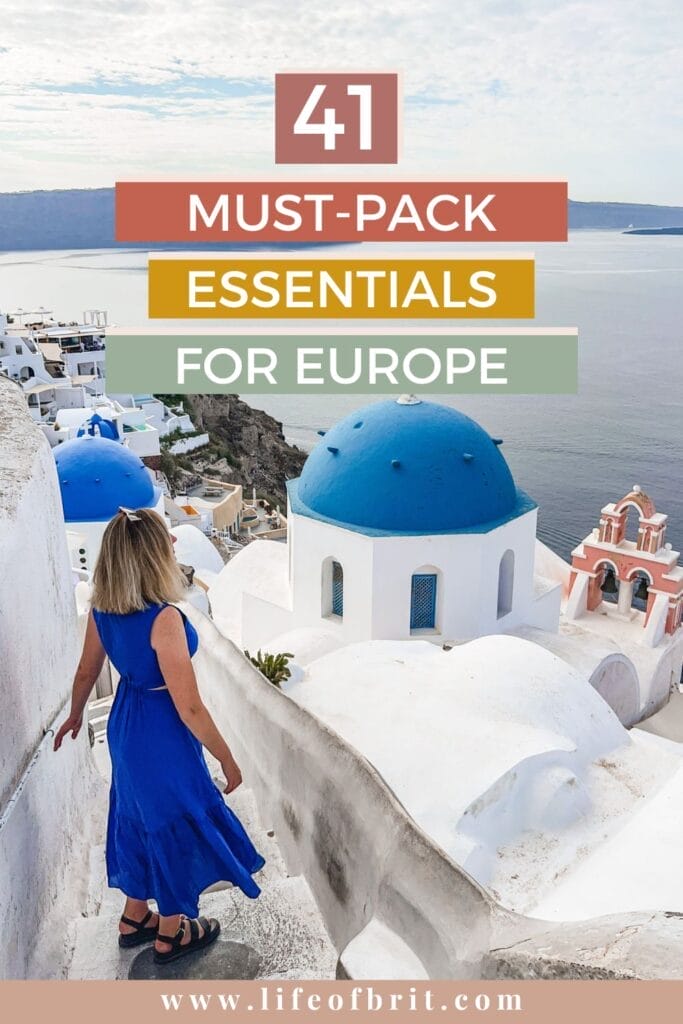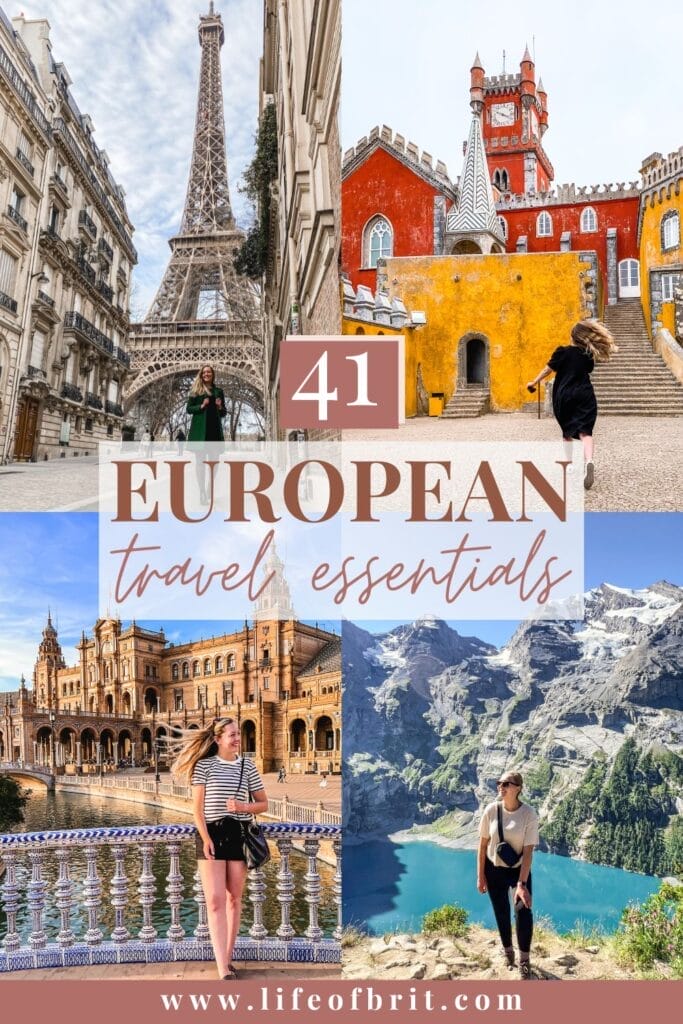This packing list shares all the essentials for traveling Europe plus need to know tips for a smooth trip around the EU.
After calling Europe home for a cumulative 4+ years and having the pleasure of visiting 24 European countries (and counting), I’d like to believe I know a lil something about traveling around this beautiful region.
And while obviously every individual country is home to its own unique culture and way of doing things, I’ve found some things to be relatively true across the board.
So in the name of smooth and well-prepared adventures (shout out to my fellow planners), here’s my list of go to essentials for European travel!
Read more: Best Travel Essentials for Women
This post may contain affiliate links, meaning at no additional cost to you, if you click my links and make a purchase, I may earn a small commission. Learn more on my disclosure page. Thank you for your support!
Table of Contents
Traveling to Europe Tips
Backpack vs Suitcase
Hostel vs Hotel
Getting Around Europe
European Travel Style
Solo Travel in Europe
Essentials for European Travel
Important Docs for Europe
Bags for Europe
General Europe Travel Essentials
5 Things to Know When Traveling to Europe
Before we dive into my recommended essentials for European travel, here’s a rundown of some of the most important things I feel travelers bound for Europe should consider.

1. Traveling Europe with a Backpack vs Suitcase
Part of your trip planning should include considering whether you want to travel with a suitcase or backpack in Europe.
A trip to most parts of Europe means a lot of walking, stairs, crowds and cobblestone/pedestrian-only streets. Mix that with a wheeled suitcase and you’re in for an unpleasant walk!
However, not every traveler wishes to carry a heavy load on their back, and a backpack can limit how much you’re able to pack and take home. Something to consider while packing for Europe!
Recommendation:
Backpack for itineraries with a lot of destinations (changing hotels), public transportation, and/or hostel stays.
Wheeled luggage for hotel stays, private transfer plans, and those hoping to bring back a good amount of souvenirs.
Read more: 11 Best Front Loading Backpacks for Travelers

2. Staying in a Hostel vs Hotel in Europe
One thing I love about traveling in Europe, is that hotels are generally more affordable than back in the states, at least outside major cities like Paris, Amsterdam and Barcelona. You can usually book hotels in Europe for under $100 per night,
Europe is also home to a thriving hostel culture, great for budget travelers, solo backpackers, and young people interested in meeting new people.
Hostels that offer private rooms and en-suite bathrooms may also be a great budget pick for people seeking privacy at a reasonable rate.
Read more: Hostel Etiquette: Tips for Staying in Hostels
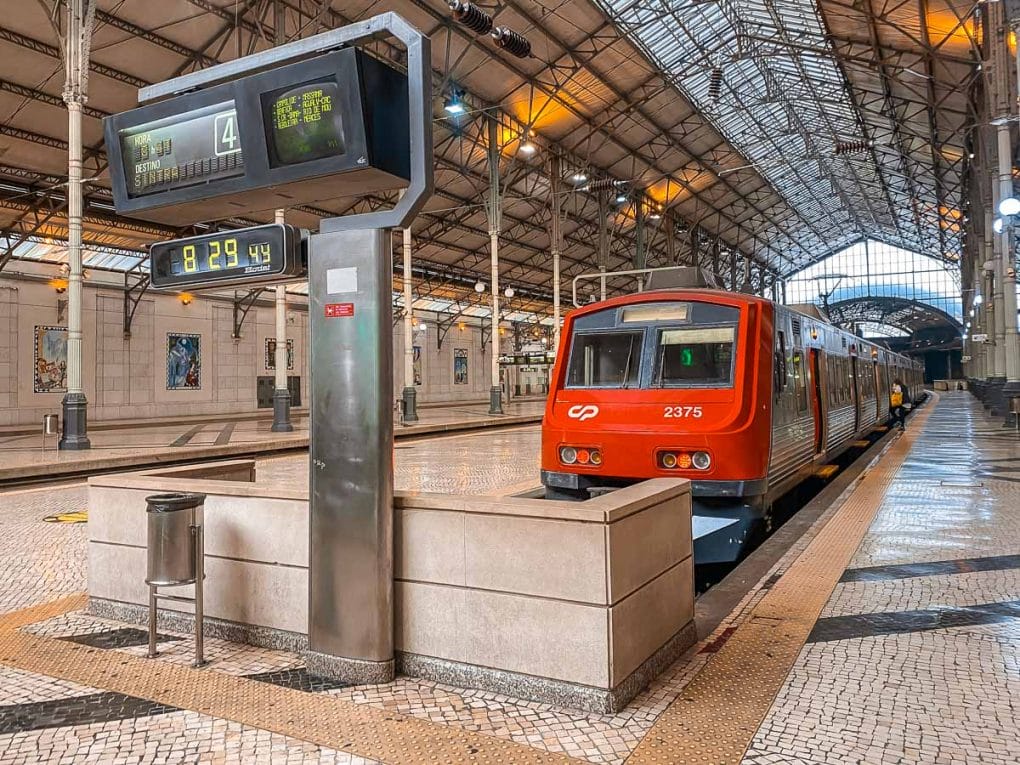
3. Getting Around Europe: Train vs Car vs Flying
One of the things I love most about European travel is that it’s significantly cheaper and more convenient to get around than say, the US. Travelers can choose between trains, cars, buses, and budget flights.
Train
Train travel across Europe is best for those with an itinerary featuring popular destinations that are fairly close to one another.
Depending on your plans, European train travel is often best with a Eurail pass.
Driving
Road-tripping around the EU is an excellent option for those who want complete freedom, flexibility, and to visit more off the beaten path destinations.
As it takes longer, driving is also best for those with ample time. Be sure to look into low emission zones and areas that require registration and payment to drive.
Flying
When trains are just a little too inconvenient, that’s where flying comes in handy. Thanks to prolific budget airlines like Ryanair and EasyJet, it’s usually cheap and easy to fly between big cities.
Read more: Ryanair Guide: Tips for Flying Ryanair

4. Prepare for A Distinctly European Way of Travel
As a generalization, many places in Europe do things a little differently than in the US.
European travel often means:
- A lot of walking over cobblestones and climbing stairs
- Public transportation is sometimes quicker than driving/taxis
- Smaller hotels and accommodations than you may be used to
- More relaxed (ie slow) dining times
- The cultural idea of the “customer is always right” doesn’t exist
Read more: Best Long Haul Flight Essentials for Your Carry On

5. Safety and Solo Travel in Europe
Europe is a safe place to travel and for solo female travelers. As a whole, it has a generally lower crime rate than the United States.
But one big thing to look out for is pickpockets and petty theft, especially in big cities and on public transportation.
Many travelers recommend security and theft proof bags to stay safe, and it’s always best to avoid putting your phone, wallet, money in your pockets or loose on tables or chairs in public.
Read more: Ultimate Guide to Solo Travel in Europe

41 Must-Have Essentials For European Travel
Now time for the good stuff! Here are my go-to travel essentials I always have on hand in Europe.
Important Documents for Traveling Europe
First things first, let’s talk about the essential documents you need to travel Europe.
1. Passport Valid at Least Three Months
One of the most important documents you need to enter the EU is a passport of course!
Your passport’s expiration date must have at least three months beyond your expected date of departure. To avoid any headaches, it’s always best to try to have six months.
Your passport should also have at least two empty pages.

2. Valid Visa or ETIAS
Depending on your citizenship, you may need a valid short stay visa to travel Europe. If you need a visa, you’ll need to collect specific documents and apply before you leave your home country.
However, many third-national countries are entitled to “visa free” entry to the Schengen area for 90 days in a 180-day period.
For example, nationals from the U.S., Canada, U.K., New Zealand, Australia, Mexico, etc, do not need to obtain a visa in advance, for now.
The EU recently introduced ETIAS, the European Travel Information and Authorization System for visa-exempt travelers. Expected to take effect in 2025, visa-exempt visitors will need to register and pay a small fee before entering the EU.
3. Driver’s License and International Drivers License
Coming with another form of ID like your drivers license is a good idea, regardless of if you plan to drive or not.
And if you do plan to drive, you must come with an international drivers permit, or IDP. Many countries require it, and it’s often required to legally rent a car in Europe.
An IDP is essentially a certified piece of paper that you carry alongside your home license, that translates key information to various languages.
My U.S. friends can get their international driving permit at a AAA travel office for $20.

4. Debit Card With 0 Foreign Transaction Fees
Many debit cards charge small foreign transaction fees for purchases made outside the card’s currency, ranging from 1%-3%.
Although small, these fees can add up, and who wants to give more of their hard-earned money to banks?
I highly recommend opening a debit card with 0 foreign transaction fees to avoid these unnecessary charges, like the Charles Schwab Investor Checking Account.
Opening this account was one of the best banking decisions I’ve ever made, and let me tell you why:
- Unlimited ATM fee refunds worldwide (even at home!)
- No foreign transaction fees, no overdraft fees, no monthly fees
- No account minimum
- 0.45% interest earned on your balance (pretty dang high for a checking account)
- Exceptional, international customer service
- Protection against unauthorized activity
4.5 Do Not Bring Excessive Amounts of Cash in Your Home Currency
Please, I’m begging you, do not come to Europe with a giant wad of cash to exchange on arrival!
I cannot tell you how many people I’ve traveled with, both friends, family, and tour participants, who arrive in Europe with hundreds if not thousands of dollars to exchange on arrival because they were led to believe it’s the most effective and safest way to travel.
One, the exchange rates you find at the airports are terrible and you will lose a ton of money through hidden fees.
Two, banks in Europe that do currency exchange can be hard to come by. Not every branch does currency exchange.
Three, banks in Europe are a pain to deal with, because they have very specific opening hours.
Four, having a lot of cash on hand means the potential for losing that money without any insurance on it like you would have if someone stole your debit or credit card.
Five, many places in Europe since COVID have become largely card-based, with some establishments not even accepting cash at all.
I recommend coming with only about €200-€500 in cash for emergencies, requested from your bank at home well in advance.
Your other option is getting money out of a local bank’s ATM (not a third party ATM) once you arrive, which is what I always do. A local bank’s ATM give you the best rate and be the easiest way to fund your travels in Europe.
It also means you won’t have large amounts of cash on you at a time, limiting loss if pickpocketed.

5. Travel Credit Card
Coming with a credit card or two is another essential when traveling abroad. Not only for everyday purchases, but also because it is another form of protection should you find yourself in an emergency and in need of funds.
I personally have the Chase Sapphire Preferred, a travel credit card I highly recommend because it has:
- Zero foreign transaction fees
- Great international support
- Built-in travel insurance for lost luggage, flight delays, car rentals, etc
- Rewards for each dollar spent, multiplied for travel related purchases
- 25% increased point value towards future travel
- 1:1 point transfers to travel partners that include big airlines (United, JetBlue, etc) and hotel chains (IGH, Marriott, Hyatt, etc)
Read more: My Personal Review of Chase Sapphire Preferred Credit Card
Tips for using credit/debit cards in Europe:
- Set up the contactless payment on your phone, as many places in Europe accept it and it’s beyond convenient.
- If asked to choose which currency to pay in, always choose the local currency. Your bank’s conversion rate will be better.
- Same for ATMs, decline their conversion rate and trust your bank’s.
- Avoid Euronet ATMs and only use ATMs from actual banks.
- Some regions, like parts of Germany and Netherlands for example, have a different type of debit card, and may not accept American credit cards.
- Request a pin for your credit card in advance from your bank. Some transactions in Europe ask for a pin, even for credit cards, and your card should have one.
- Leave the American Express at home, it’s not commonly accepted. Visa and Mastercard are best.
- If possible, come with multiple cards and emergency cash to ensure you stay funded no matter what happens.
Read more: 50+ Travel Tips: A Complete Guide to Traveling to Europe for the First Time
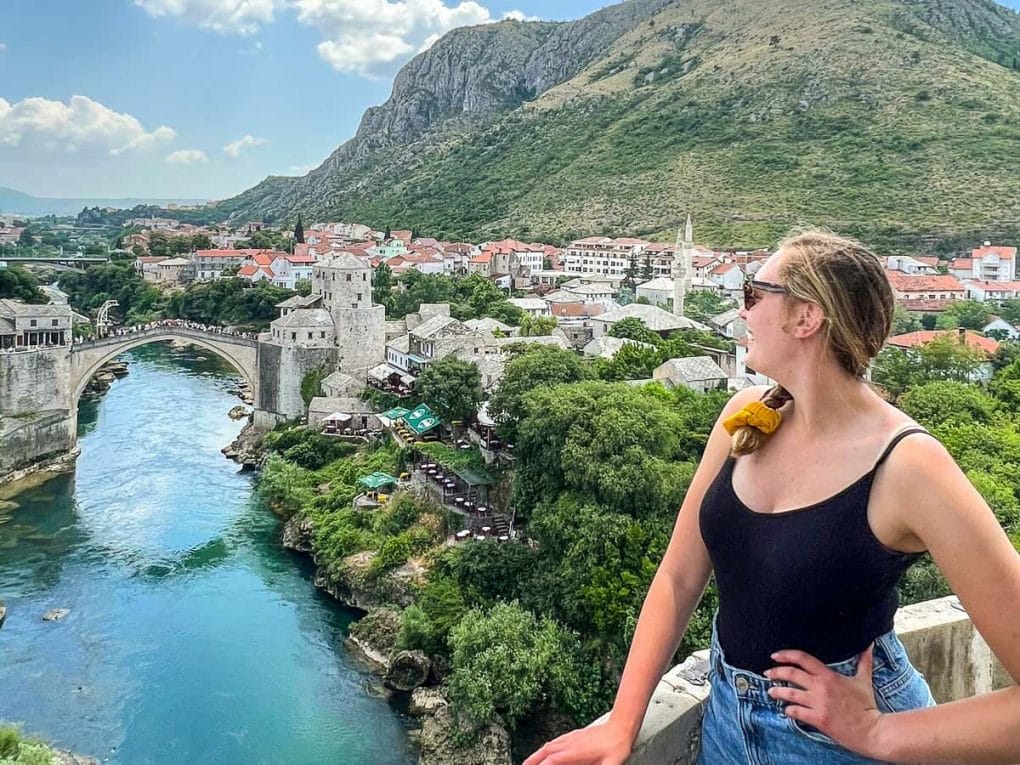
6. Travel Insurance
You never know what may happen when you travel, so having a travel insurance policy is a good way to protect against the unknown.
I recommend researching companies and policies are best for you and your circumstances. Some notable companies include Nationwide, HTH Worldwide, World Nomads, and Safety Wing.
7. eSIM
An eSIM is an easy and convenient way to get data on your phone abroad without having to go to a local phone store to register.
My go-to is Airalo, which is an app you download on your phone. From the app, you can choose the country you need data for, select the plan you want, and install it immediately over WiFi. And topping up your data is super easy from the app, too.
Some things to note: With Airalo, you won’t get a local phone number but only access to data. But with data, you can make calls over the internet with programs like FaceTime, WhatsApp, Skype, Facebook, etc.
Not all phones are compatible with eSIMs. You need to check that your phone is new enough to support the technology. You also need to ensure your phone is unlocked (not tied to a single cellular provider) as well.
If you’re new to Airalo, you can get $3 USD off your first eSIM data pack with my code BRITTA7449 or via this link.

8. Advanced Reservations and Bookings
Since COVID, many major attractions in Europe now require advance bookings and reservations not only for general tickets, but particular time slots as well.
And with the insane increase in European travel, major attractions like Paris’ Eiffel Tower, Rome’s Colosseum, and Barcelona’s Sagrada Familia, have been selling out in advance.
In fact, I recently traveled to Amsterdam and thankfully booked our tickets to the Van Gogh Museum and Anne Frank House a month in advance. And even then many desirable timeslots were nearly if not fully booked out.
We saw so many sad travelers in line turned away because the day was fully sold out. So be sure to come to Europe with advanced bookings to any famous landmarks you’re dying to see.
9. Photocopies of Everything
I recommend coming with photocopies of your important documents in case you lose anything important, like your passport.
These photocopies ensure you know important numbers and information should you need to get anything replaced.
10. Europe Apps
Coming prepared with essential Europe apps is also crucial for easy travels. Because information is key, and having everything you need in the palm of your hands is a godsend!
A brief overview of the best apps for European travel:
- Google Translate with language downloaded
- Maps.me for offline maps
- Airalo for eSIM
- Rick Steves Audio Europe, free DIY guided walking tours
- FreeNow, Uber for rideshare taxis
- Hostelworld, Booking.com, apps with your accommodation reservations
- Flixbus, Eurail, train and bus travel apps

Bags For European Travel

11. Carry On Bag
Every traveler needs a handy carry-on bag! Here are some recommended overhead bin carry-on bags:
The Cotopaxi Allpa 35L is a clamshell backpack I personally use and love. It comes in many fun colors, features a rain cover, two internal zipper compartments to keep everything organized and together, and more.
The Beis’ The Weekender bag is another cult favorite! This unique duffel is carry-on sized and features a trolley sleeve, separate shoe compartment and internal laptop pocket.

12. Day Bag/Personal Item
Arriving in Europe with a quality personal item that doubles as a day bag is also essential.
I travel with my Fjallraven Kanken, a cute and compact backpack with a laptop sleeve that can double as a daypack for hiking. But this laptop backpack by Lenovo is another great pick.
A packable backpack that folds down into a handy carrying case is also a great option for travel around Europe!
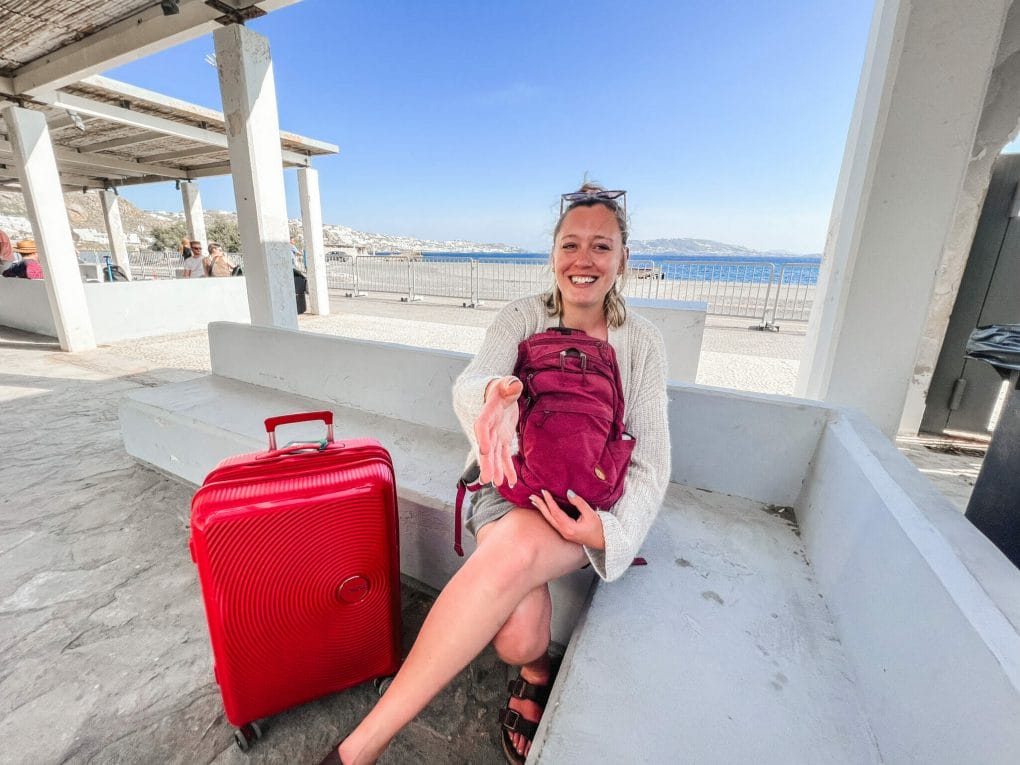
13. Checked Bag
American Tourister offers reasonably priced suitcases that stand up against rough handling. I love my Soundbox that comes in three sizes and features a zipper internal pocket, and smooth 360-degree wheels. It also comes in fun colors.
Samsonite is a reputable luggage brand that I’d say is a little higher end than American Tourister (which is owned by the same company FYI). But Samsonite bags are usually highly reviewed and considered a reputable and durable brand.
Away is another brand that’s rocketed to the top of the charts as an excellent maker of suitcases. No doubt thanks to their well made bags and unbeatable lifetime warranty.

14. Theft Proof Bag
Theft proof bags are designed to ward off pickpockets thanks to their thick slash-proof material, secure zippers, hidden pockets, or being thin enough to be worn underneath clothes.
They come in a variety of styles including purses, backpacks, fanny packs, etc.
Some of the best-reviewed theft-proof travel bags are:
- Pacsafe Citysafe laptop backpack: a cute and functional theft-proof laptop backpack made with durable and waterproof nylon measuring 15.4″H x 10.6″W x 6.3″D.
- Pacsafe Citysafe purse: a sleek fold-over purse that can be locked to fixtures and measures 11.0″H x 10.2″W x 3.2″D.
- Venture 4th Hidden Travel Belt: A discrete travel belt that keeps your passport, cash, and cards safe and hidden away around your waist.
- Venture 4th Travel Neck Wallet: A wallet that hides away your important belongings with a neck strap.
In full transparency, when I travel around Europe I personally don’t feel the need to wear the hidden neck belts or neck wallets as I don’t think they’re fully necessary.
But I wanted to share because many people swear by them and they are a great way to have peace of mind if you’re a nervous traveler or it’s your first time in Europe.

15. Packing Cubes
I used to be anti-packing cubes but they truly upped my packing game. They help keep things organized and make it possible to pack more into a single suitcase or backpack.
They’re also great for keeping clean and dirty things separate! High-rated, best packing cubes to check out:
- BAGAIL 8 Set Packing Cubes: medium, large, XL, sock bag, undie bag, shoe bag, cosmetic bag, drawstring bag
- AmazonBasics Packing Cubes: four-piece, classic packing cubes that come in the option of small, medium, or large.
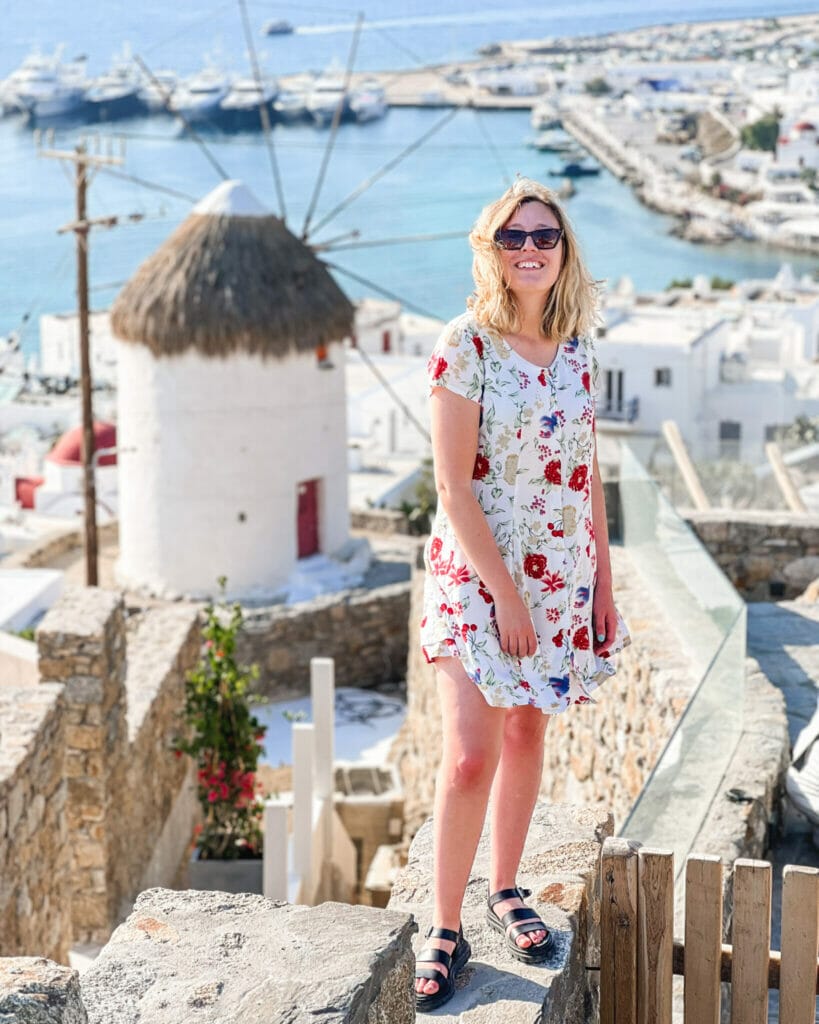
General Travel Essentials for Europe

16. Plug Adapter
Did you know that not all European countries have the same outlet style? While most countries use the two round prong Type C, not all!
In the U.K. and Ireland they use Type G. In Switzerland they use Type J. And in Italy, you may find Type L.
Packing an all-in-one travel adapter ensures that no matter where you are, you’re able to power your devices.

17. 220V Appliances
Not only are outlets different in Europe, but so is the electrical output. In the U.S., the output is 110 volts, but in Europe it’s 220.
That means American hair stylers like dryers, curlers and straighteners are not designed to work in Europe and may short circuit or literally burn out.
Thankfully, most other essential electronics have chargers designed to be dual voltage, so you likely don’t need to worry about your phone, camera, or laptop chargers. They can function with just the plug adapter (but be sure to verify!).
Packing dual voltage, travel-sized hair stylers are the way to go when traveling to Europe.
- Conair Travel Hair Dryer: a compact and foldable hair dryer with two heat settings that’s cheap and gets the job done
- FURIDEN Lite Small Size Travel Curling Iron also doubles as a straightener and can be used at home and abroad.
18. Bluetooth Tracking Tags/Air Tags
Due to increased travel and staff shortages, there’s been an increased need for a new kind of travel essential: Bluetooth tracking devices.
They use Bluetooth to share their location on your smartphone, making it possible to track your luggage and valuable possessions while traveling.
Some of the best tracking devices for travelers are:

19. Good Walking Shoes
My idea of the perfect walking shoe is a comfortable, stylish, and timeless pair.
Everyone has a different style aesthetic, but my go-to tends to be any version of white Nike or Adidas low tops because they never go out of style and match most outfits.
And in the winter, I like to rock a nice pair of ankle Chelsea-style boots whether leather or rain proof, which I then pair with upgraded insoles and thick, wool socks.

20. Shoe Insoles
I’m a big fan of shoe insoles because they turn an otherwise cute but uncomfy shoe into one that allows me to take on a big day of walking. The right shoe insoles can help relieve foot, knee, and back pressure, while you rock your shoe style of choice.
My personal go-to is this sole insert by Dr. Scholl’s!

21. Comfortable Sandals
This next recommendation may age me a bit, but I’m a big big fan of practical and comfortable sandals when exploring Europe.
While I’m a Birkenstock girl through and through, I’ve had my eyes on trying out Tevas and Chacos because they also have a cult following and are known for being comfy and great for walking.
These sandals are not only great for managing Europe’s cobblestones and stairs, but outdoor adventures too.

22. Passport Wallet
Staying organized while traveling is very important, especially when it comes to your passport! Having a passport wallet is a great way to keep track of your important travel docs.
For extra security, consider getting an RFID Passport Wallet. RFID protection is an added bonus because it makes it impossible for scammers to walk by and scan your credit card information.

23. Rain Jacket
Many places in northern Europe are known to be rainy, so coming prepared with a good rain jacket is a must.
I’ve owned rain jackets from both the North Face and Columbia and was happy with their rainproof-ability.
If you’re not into the outdoorsy style, this SaphiRose rain jacket and Fahsyee option are cute and affordable.
I recently purchased a rain jacket from America Today, a European brand that sells cute anorak style water resistant jackets in a variety of colors.
No products found.24. Compact Umbrella
Having a super compact umbrella handy has been a lifesaver on my European travels.
I purposefully chose one small enough to fit into my purse or coat jacket, measuring about 7 inches long (18cm). Admittedly, these compact umbrellas aren’t always the most durable, but they are convenient.
I got mine from a shop when I was out and about on a rainy day in Germany, and they’re pretty easy to find. But if you’re looking for an Amazon rec consider the Yoobure Small Mini Umbrella.

25. Portable Battery Charger
An external battery is a great way to stay charged, safe and connected when exploring a new European destination.
Back-up power ensures you always have a way to stay connected and find your way back to your hostel via your smartphone.
Some recommended portable batteries:
- The Anker Portable Charger is a top-rated portable charger that tops the charts as one of the best quality, durable, and long-lasting.
- I recently purchased the Zendure SuperMini 20W per a New York Times recommendation in their 2023 roundup of the best portable chargers and I love how compact it is and that it can charge my phone nearly two times.
- Omnicharge Omni 20+ 20000mah Power Bank is a powerful charging bank that packs a punch! This thick charger allows you to charge your phone and larger devices like laptops. It’s great for those who require a lot of power and must charge multiple devices simultaneously.

26. Earplugs
Earplugs are essential for European travel for a few reasons. They can ensure you get some good rest on your long flight over, and can keep out city noise when sleeping in your hotel.
Mack’s Pillow Soft Silicone Earplugs are a classic pick that has long been known as some of the best earplugs for sleep. Made of soft silicone, these plugs are designed to mold to your ear shape for maximum comfort and soundproofing.
Loop Ear Plugs are a premium pick that is reusable and comes in fun colors. Made from hypoallergenic silicone, you can rest assured these are designed for comfort.

27. Eye Mask
Eye masks are another way to foster good sleep by keeping out light pollution.
The Alaska Bear Silk Sleep Mask is a simple but effective flat, silky eye mask that is sure to do the trick. I love my silk eye mask for its soft and smooth fabric that’s easy on my skin.
For something a bit more elevated, the MZOO Sleep Eye Mask is made of memory foam and designed to be zero pressure, thanks to its 3D eye socket pockets.

28. Coin Purse
This may seem like a very random recommendation, but I never go anywhere in Europe without a coin purse.
That’s because €1 and €2 euros are coins instead of paper bills. So when you pay in cash, you’re likely to get a nice chunk of change back.
Plus, it’s common to have to pay for public restrooms in Europe, anywhere between €0.50 to €1, so having your coins readily accessible rather than floating around the bottom of your bag can keep you from awkwardly digging for change in the bathroom line.
This Travelambo Leather Squeeze Coin Purse and zippered Manhattan Portage Coin Purse are highly rated options on Amazon..
Otherwise, coin purses/small zippered bags are a common item sold at souvenir shops and can make for a fun and practical European souvenir.

29. Reusable Water Bottle
Tap water is safe to drink in Europe! Stay hydrated and save some money by bringing a reusable water bottle.
I never go anywhere without my 32oz Hydro Flask, which I feel is big enough to last me a bit without being too bulky that it’s annoying to carry around.
The LARQ Bottle is an insulated, stainless steel bottle that is self-cleaning and water sanitizing thanks to the built-in UV light—an especially convenient feature for those who want to ensure their drinking water is clean.
For something more space saving, this collapsible water bottle is another great pick.

30. Hanging Toiletry Bag
Regardless of where you go, a toiletry bag is a staple that every traveler should have.
I personally like my hanging toiletry bag because it allows me to easily access my toiletries by hanging it on a towel rack or hook.

31. Travel Toiletries Bottles
Travel bottles are another one of those no-brainer travel essentials that make travel easier by limiting the need to haul around full-sized products.
Getting ones sized to TSA/EU airline specs (3.4 oz or 100ml) also means you can safely bring essential toiletries on your flight.

32. Safety Gear
For extra security and peace of mind, there are many travel gadgets you can pack to provide peace of mind while on your adventure.
- Nightcap Drink Protector: a scrunchie with an expandable cover to prevent your drink from being spiked on a night out.
- Portable door lock: a portable door lock for hotels to prevent the door from being opened from the outside, even with a key.
- Portable door jam with alarm: a door wedge with an alarm to alert you to anyone entering your room, particularly best for use in vacation rentals.
- Self-Defense Keychain: A cute keychain that comes with a variety of security accessories, including a personal alarm, whistle, hand sanitizer holder, etc.

33. Travel Blanket
Bringing along a travel blanket is a great way to stay warm and cozy on your flight across the pond.
And while many international flights do include complimentary blankets, having your own is handy in case 1. The plane’s blanket isn’t very nice and 2. So you have a backup to use if you’re extra cold or need more head support.
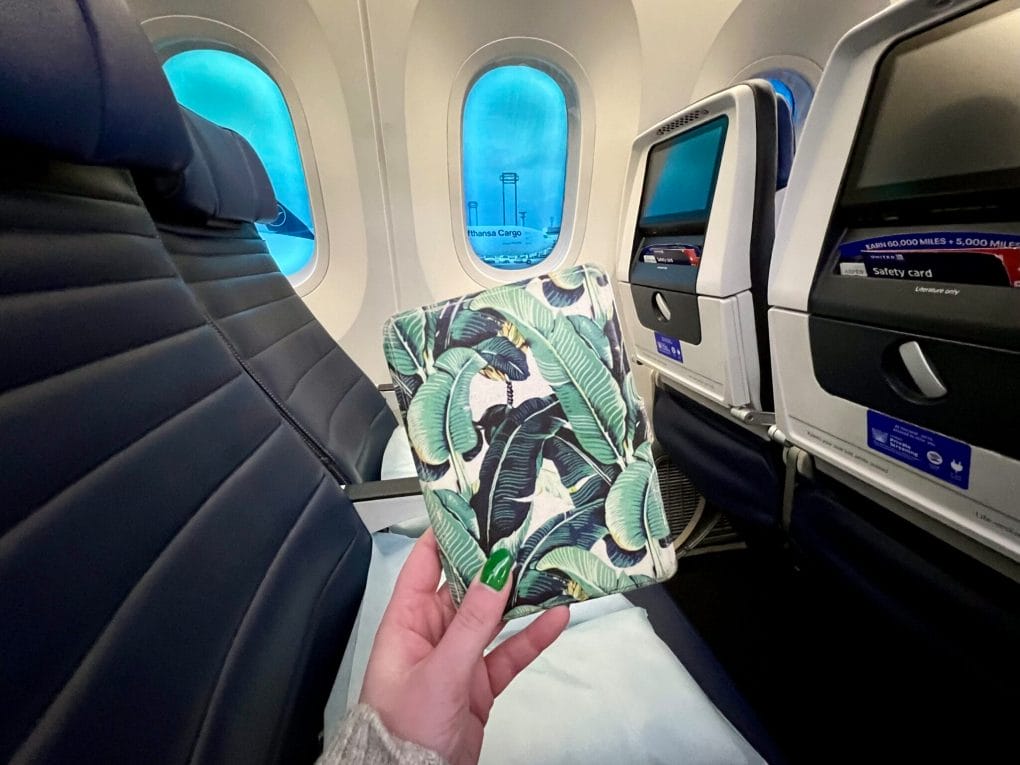
34. Kindle or e-Reader
I know there are some book lovers who are staunchly opposed to using e-readers but lemme tell ya, when you’re traveling and have a lot to pack, e-readers are a major lifesaver.
They make it possible to carry hundreds of books on the road without the weight of physical copies. You also don’t have to worry about damaging a beloved book while transporting it in a bag.
I’ve had my Kindle for yeeeears and it’s still going strong. I love that the battery lasts days, that it’s lightweight and easy to carry, and that the back light is adjustable making it possible to read in any light conditions.
Some of the best E-readers are:
- Kindle Paperwhite: I love my Kindle. It’s compact and lightweight, doesn’t need to be charged often, holds hundreds of books, and the new models are even waterproof. Kindles are also affordable, and mine has lasted me years.
- iPad mini or SAMSUNG Galaxy Tab: for a tablet that can do more than just act as an e-reader, consider one of these leading tablets. A compact tablet can mean not needing to carry around a hefty laptop, offering more functionality than just an e-reader.

35. Scarf
A lightweight scarf can come in handy in more ways than one. While it can help keep you warm, it can also act as a blanket or pillow on long plane/train/bus rides.
A scarf can also be useful as a shoulder covering when visiting churches with strict dress codes, a common need in more traditional places like Italy and Spain.
There are even travel scarves with hidden security pockets.

36. Instax Camera + Film
Less of an essential and more of a fun travel accessory, I’ve come to love my Fujifilm Instax Mini. It’s a unique way to capture memories and memorialize your time in Europe.

37. Sunscreen
Since my days living in South Korea, I’ve become a skin care girlie through and through and am a big advocate for proper skin care.
Even in cloudy conditions, I highly recommend bringing with you a quality moisturizer with SPF. Especially because a trip to Europe usually means long days spent outside under the sun or lounging on the beach.
My go to facial sunscreen basics are La Roche Posay or Neutrogena Ultra Sheer SPF.

38. Smart Casual Clothes
A lot of Americans ask me, “what should I wear to Europe?”. It’s not really a secret that as a generalization, Europeans tend to dress a little more fashionably than Americans.
While it’s unnecessary to wear anything formal or fancy, I do recommend leaving your athleisure, gym shorts, sweats etc. at home or save them for bedtime.
But otherwise, you’re totally free to wear what you usually do at home! You don’t have to worry all that much.
When packing for Europe, try to bring pieces that mix and match well, as well as layers for hot and cold weather.
Depending on how long my trip is, I typically bring:
- 2-4 bottoms
- 2 cover-ups/sweaters
- A coat or jacket
- 4-5 tops
- 1-3 dresses
- loungewear (leggings, sweats, shorts)
- A swimsuit
- An appropriate number of socks and undies
I also try to limit my shoes to two or three pairs: cute but comfy sneakers, boots (fall/winter) or sandals (summer), and specialty shoes if my travel plans include hiking, running, going out, etc.

39. One Modest Outfit
This is becoming less and less of a need, but some churches in Europe do have dress codes that require shoulders, knees, midriff and chest covered for entry.
I’ve experienced this requirement specifically in Italy at the Vatican and Spain’s Sagrada Familia, although I saw visitors get in with shoulders bared, so I’m not sure they care all too much these days. Something to keep in mind!

40. Shower Shoes or Cheap Flip flops
Depending on your travel plans, waterproof sandals are useful for hostel stays, beach visits, public pools, and traditional bathhouses.
Any ole flip-flops will do the trick, but coming prepared with non-slip flip-flops and/or quick-drying pillow slides that haven’t been used outside (i.e., aren’t dirty) is recommended.

41. Travel Neck Pillow
Admittedly I was anti neck pillow for most of my travel years, until I recently had 20+ hours of flight time on my way to Australia!
I took a memory-foam neck pillow with me, and I’m so glad I did. It helped me sleep sitting up and ward off long lasting jet lag.
The trtl travel pillow is another neck pillow that travelers swear by! I’ve never used it personally, but thought I’d shout it out since it is so popular.
Phew, that was a lot! Have any essentials for European travel that I missed? Share below!
